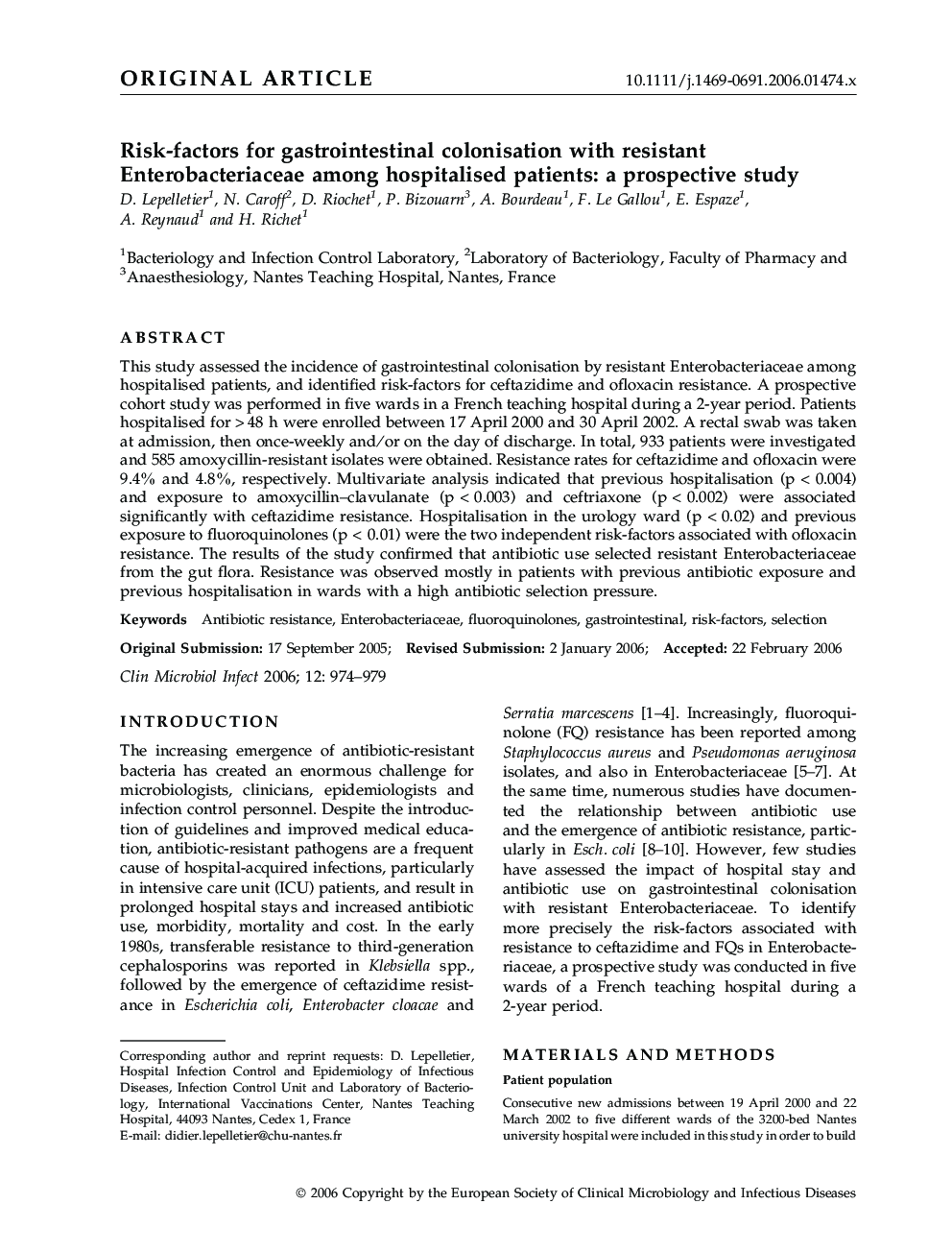| Article ID | Journal | Published Year | Pages | File Type |
|---|---|---|---|---|
| 3398562 | Clinical Microbiology and Infection | 2006 | 6 Pages |
ABSTRACTThis study assessed the incidence of gastrointestinal colonisation by resistant Enterobacteriaceae among hospitalised patients, and identified risk-factors for ceftazidime and ofloxacin resistance. A prospective cohort study was performed in five wards in a French teaching hospital during a 2-year period. Patients hospitalised for > 48 h were enrolled between 17 April 2000 and 30 April 2002. A rectal swab was taken at admission, then once-weekly and/or on the day of discharge. In total, 933 patients were investigated and 585 amoxycillin-resistant isolates were obtained. Resistance rates for ceftazidime and ofloxacin were 9.4% and 4.8%, respectively. Multivariate analysis indicated that previous hospitalisation (p < 0.004) and exposure to amoxycillin–clavulanate (p < 0.003) and ceftriaxone (p < 0.002) were associated significantly with ceftazidime resistance. Hospitalisation in the urology ward (p < 0.02) and previous exposure to fluoroquinolones (p < 0.01) were the two independent risk-factors associated with ofloxacin resistance. The results of the study confirmed that antibiotic use selected resistant Enterobacteriaceae from the gut flora. Resistance was observed qmostly in patients with previous antibiotic exposure and previous hospitalisation in wards with a high antibiotic selection pressure.
